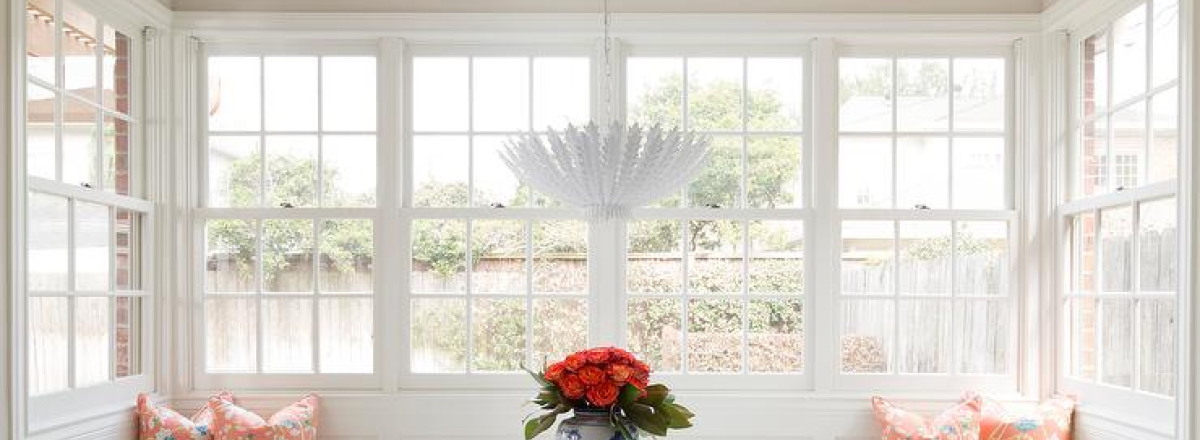

Your Ultimate Guide to Bay Windows
Bay windows are beautiful additions to homes. There is something about the quaintness they add to a space while still expanding the room that many homeowners love. In a way, they tie the room with the outdoor space, bringing them closer together. Bay windows are great additions to just about any room in the house from the living room, to the kitchen, dining room, and even bedrooms. If you are thinking about adding bay windows to your existing or future home, here’s everything you need to know about them.
The Origin & Types of Bay Windows

The origins of bay windows may be traced back to the mansions of the English Renaissance era (late 15th-17th century). Bay windows were also widely prominent in Victorian architecture as well, especially in the homes of upperclassmen. This architectural style made its way into the modern world and is still a beautiful addition to just about any home.
One of the major house styles that bay windows clash considerably with are modern and contemporary homes. Although they can be customized to seamlessly match with spaces in that style as well, they are less common compared to more traditional styles of homes.
There are a few different types of bay windows that you can opt for. The most traditional bay windows are made up of three window panes with the middle piece being fixed and the side two operable. Bay windows can, however, also have four windows and are referred to as box windows. Even further, bay windows can be hexagonal as well if the space allows. Additionally, bay windows can either be detached from the ground like regular windows which are referred to as oriel windows or they can span from the floor to the window sill. The latter suggests that the part of the house in the shape of the bay window is also extended outwards. Such are bay windows that have a seating and storage area immediately under the sill.
Advantages of Bay Windows
A lot of homeowners love the look and feel of bay windows, and the best part is that they come with a lot of advantages to your home.
- Comfy nook — If your space allows it, you may be able to fit a seating and storage area that spans under your bay windows from the inside. This will give you and your guests an extra cozy place to sit, read, and, of course, enjoy the view outside.
- Expansion of space — Since bay windows expand outwards of the initial window frame, they expand the space, even by just a little bit. That increase in space is much more significant if your bay windows are taller or have a seating space under them.
- Added home value — Not only are bay windows an investment for you to enjoy in the present, but they can also add value to your home if you decide to sell. Added natural light, curb appeal, beautiful windows, and comfort (if you’ve turned it into a nook) can all win you points with buyers.
- Picturesque view — Even the smallest bay windows (3 panes) opens up your space to the view outside, along with providing a sense of bringing the outdoors inside.
How Much Do They Cost?
The cost of bay and bow windows depends on if you are simply replacing an existing one or completely renovating the existing window into one. That is due to the fact that the latter may require further home improvement regarding making an opening in the wall and attaching the top layer of the bay windows that extends outwards. The price also depends on the number of panes that you opt for (three, four, or six), increasing by around $300 for each pane added, but can range upwards of $1000 depending on the type of material for the glass and pane you select. The whole bay window set up with a seating trim and storage area may cost upwards of $2000.
Don’t forget to browse our selection and get in touch with us today for any questions.